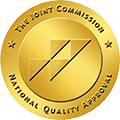Alcohol and drug rehab centers provide a safe and structured environment for people who are struggling with addiction. The first step in treatment is detox, which helps the individual to safely withdraw from the substance. Once detox is complete, the individual will begin therapy, which can include group therapy, individual counseling, and family therapy. During this time, the individual will work on developing coping skills and building a support system. After completing treatment, the individual will be discharged from the rehab center and will continue to receive support through recovery groups and Alcoholics/Narcotics Anonymous meetings.
A typical day in drug or alcohol rehab typically starts with breakfast followed by a group therapy session. After the group, patients usually have some free time to themselves before lunch. After lunch, there is usually another group therapy session followed by more free time. In the afternoon, patients might participate in activities such as yoga or art therapy.
Dinner is typically followed by another group therapy session and then some free time before bed. During their free time, patients might journal, read, or call friends and family. The goal of treatment is to help patients learn how to live sober lives, and the daily schedule is designed to provide structure and support during this difficult process.
Alcohol and drug rehab centers offer a variety of treatment options for people struggling with addiction. The first step in treatment is typically detoxification, which helps the individual safely withdraw from the substance of abuse.
Detox and withdrawal are often cited as the first and hardest step in overcoming addiction. This is because detoxification can lead to a range of uncomfortable and even dangerous symptoms, including fevers, delirium tremens, and seizures. In some cases, detoxification may need to be done under medical supervision in order to ensure the safety of the individual.
However, even with medical support, detoxification can be a difficult and challenging process. withdrawal symptoms can include anxiety, irritability, insomnia, and nausea. It is important to remember that detoxification is only the first step on the road to recovery, but it is an important one. Withdrawal can be a difficult experience, but it is important to remember that detoxification is only the first step on the road to recovery. Withdrawal can be a difficult experience, but it is important to remember that detoxification is only the first step on the road to recovery.
Inpatient rehab refers to a type of treatment in which patients live at the facility for the duration of their treatment. This allows them to receive around-the-clock care and support from medical professionals. Inpatient rehab is often recommended for patients who have a complex medical history or who require intensive treatment.
It can also be a good option for patients who are struggling with sobriety in an outpatient setting. Inpatient rehab usually lasts for 28 days, but some programs may be longer or shorter. during inpatient rehab, patients will participate in various types of therapy, including individual and group therapy, as well as activities such as art therapy, in order to help them recover from addiction. Inpatient rehab can be an effective treatment option for those struggling with addiction, and it can give them the tools they need to lead a sober life.
drug and alcohol rehabilitation facilities offer a variety of programs designed to meet the needs of individuals struggling with addiction. While some people may benefit from inpatient treatment, others may find that partial drug and alcohol rehab is a more effective option. Partial drug and alcohol rehab typically involves attending therapy sessions several times a week while living at home or in a sober living community.
This allows people in recovery to maintain their job, attend school, and take care of their other responsibilities while still receiving the support they need to stay sober. Additionally, partial drug and alcohol rehab can be less expensive than inpatient treatment and is often covered by insurance. If you or someone you know is struggling with addiction, contact a drug and alcohol rehabilitation facility today to learn more about partial drug and alcohol rehab programs.
Intensive outpatient drug and alcohol rehab programs offer a high level of care for people struggling with addiction. These programs provide intensive treatment while allowing patients to live at home and continue working or attending school. Outpatient programs typically involve individual and group therapy, as well as medication management.
Intensive outpatient programs offer a more intensive level of care, with patients typically attending therapy 3-5 days per week. These programs can be highly effective in helping people to overcome addiction and achieve long-term recovery. If you or someone you love is struggling with addiction, intensive outpatient drug and alcohol rehab may be the right choice.
Maintenance outpatient drug and alcohol treatment is a type of care that is provided on an ongoing basis to help people recover from substance abuse disorders. It typically consists of regular counseling sessions, support groups, and other types of therapy. Maintenance outpatient treatment can be an effective way to maintain sobriety, especially for people who have already made significant progress in their recovery.
It can also be a convenient option for people who cannot commit to a more intensive treatment program, such as inpatient rehab. Maintenance outpatient treatment can be an important part of someone’s recovery journey, helping them to stay on track and avoid relapse.
Get confidential help 24/7. Call now for:
Related Articles
Get Help Now
Medical Advice Disclaimer
Magnified Health Systems aims to improve the quality of life for people struggling with substance use or mental health disorder with fact-based content about the nature of behavioral health conditions, treatment options and their related outcomes. We publish material that is researched, cited, edited and reviewed by licensed medical professionals. The information we provide is not intended to be a substitute for professional medical advice, diagnosis or treatment. It should not be used in place of the advice of your physician or other qualified healthcare providers.

Dr. Bickley graduated from U.C. Irvine with honors: Phi Beta Kappa, Golden Key International Honor Society, Cum Laude. He has been featured on national radio and print media. He is also a frequent lecturer at National Conferences. He holds an A.S. degree in Drug & Alcohol Studies, and two B.A. degrees in Criminology & Psychology, and masters and doctoral degree in Clinical Psychology. He is a licensed California Drug & Alcohol Counselor Level II, a licensed Clinical Supervisor and is certified in treating Eating Disorders.
Call Us Now, Our Admissions Team Is Standing By And Available 24/7.

Head Office Location:
1530 N Federal Hwy Lake Worth, FL 33460
Contact & Feedback:

We are here for you.
We are here for you, Call us and get started!
